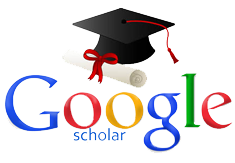Pengaruh Pemanfaatan Lingkuangan Alam Sekitar Sekolah Sebagai Sumber Belajar Terhadap Hasil Belajar Siswa Kelas VII SMPN Sokoria
DOI:
https://doi.org/10.31004/jpdk.v5i3.15580Abstract
Tujuan dari penelitian ini adalah untuk mengetahui pengaruh pemanfaatan lingkungan alam sekitar sekolah sebagai sumber belajar terhadap hasil belajar siswa kelas VII SMP Negeri Sokoria. Jenis penelitian adalah kuantitatif dengan metode eksperimen, dengan desain penelitiannya yaitu one grup pretest-posttest design(Sugiyono, 2018:74). Populasi dalam penelitian ini adalah siswa kelas VII SMP Negeri Sokoria berjumlah 30 siswa dengan teknik pengambilan sampel yaitu simple random sampling. Pengumpulan data dilakukan dengan tes, observasi dan dokumentasi. Data yang diperoleh dari sampel penelitian berupa nilai penggunakan lingkungan alam sekitar sekolah sebagai sumber belajar. Analisis data menggunakan paired sample t-test.Hasil penelitian menunjukan bahwa pemanfaatan lingkungan alam sekitar sebagai sumber belajar berpengaruh terhadap hasil belajar siswa kelas VII SMP Negeri Sokoria. Hal tersebut dapat dilihat dari rata-rata nilai pretest sebelum diberikan perlakuan 29,96% sedangkan nilai rata-rata posttest hasil belajar siswa setelah diberikan perlakuan dengan pembelajaran memanfaatkan lingkungan alam sekitar sebagai sumber belajar meningkat menjadi 87,29%. Selain itu berdasarkan uji hipotesis paired sample t test diperoleh nilai sig. (2-tailed) 0,000 < 0,05.Downloads
Published
2023-06-12
How to Cite
Lando, E. G. ., mete, Y. Y. ., & Jariyah, A. . (2023). Pengaruh Pemanfaatan Lingkuangan Alam Sekitar Sekolah Sebagai Sumber Belajar Terhadap Hasil Belajar Siswa Kelas VII SMPN Sokoria. Jurnal Pendidikan Dan Konseling (JPDK), 5(3), 289–295. https://doi.org/10.31004/jpdk.v5i3.15580
Issue
Section
Articles
License
Copyright (c) 2023 Efintus Gerin Lando, Yuliana Yenita mete, Ainun Jariyah

This work is licensed under a Creative Commons Attribution-ShareAlike 4.0 International License.
Authors retain copyright and grant the journal right of first publication with the work simultaneously licensed under a Creative Commons Attribution-ShareAlike 4.0 International License that allows others to share the work with an acknowledgement of the works authorship and initial publication in this journal. Authors are able to enter into separate, additional contractual arrangements for the non-exclusive distribution of the journals published version of the work (e.g., post it to an institutional repository or publish it in a book), with an acknowledgement of its initial publication in this journal. Authors are permitted and encouraged to post their work online (e.g., in institutional repositories or on their website) prior to and during the submission process, as it can lead to productive exchanges, as well as earlier and greater citation of published work (See The Effect of Open Access).





.png)










